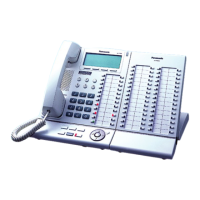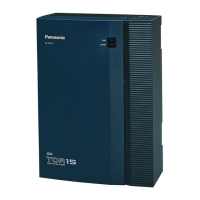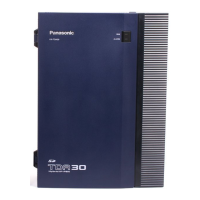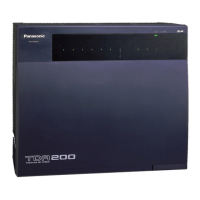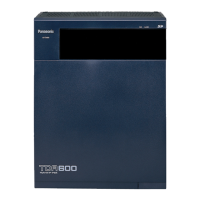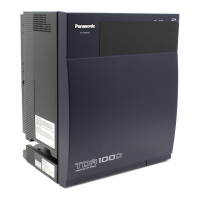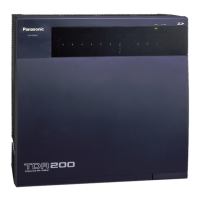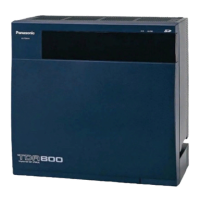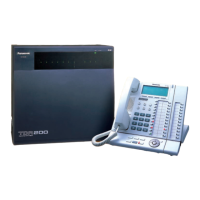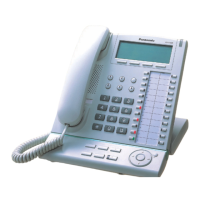c. COS 3 can make calls to COS 3 only.
COS 1
Extn. 100 Extn. 101
COS 2
Extn. 102 Extn. 103
COS 3
Extn. 104 Extn. 105
Extn. 106
Conditions
• Internal
Call Block also prohibits certain features, such as Walking Extension and Walking COS, from being
performed between certain extensions.
• Any extension can make an Operator Call regardless of the Internal Call Block setting of its COS. (®
12.1.5 Operator Features)
• Because each doorphone port is assigned a COS, the Internal Call Block feature can restrict certain
extensions from calling certain doorphones. (® 4.1.11 Doorphone Call)
PC Programming Manual References
4.13 [2-7-3] Class of Service—Internal Call Block—
COS Number of the Extension Which Receive the Call
from Other Extension 1–64
5.12 [3-5-1] Incoming Call Distribution Group
—Group Settings—Main—
COS
6.1 [4-1-1] Wired Extension—Extension Settings
—Main—
COS
6.10 [4-2-1] Portable Station—Extension Settings
—Main—
COS
7.1 [5-1] Doorphone— COS
7.6 [5-4] External Relay— COS Number
Feature Manual References
3.1.20 COS (Class of Service)
9.1.15 IP-PT (IP Proprietary Telephone)
Description
This PBX supports the connection of IP proprietary telephones (IP
-PTs), which function almost identically to
normal PTs. However, they connect to the PBX over a Local Area Network (LAN), and send and receive calls
using Internet Protocol (IP).
IP-PTs have two Ethernet ports for connection, primary and secondary. They are connected to the PBX through
a network hub or other splitting device, and can have a PC connected to the secondary Ethernet port.
172 Feature Manual Document Version 2010-11
9.1.15 IP-PT (IP Proprietary Telephone)

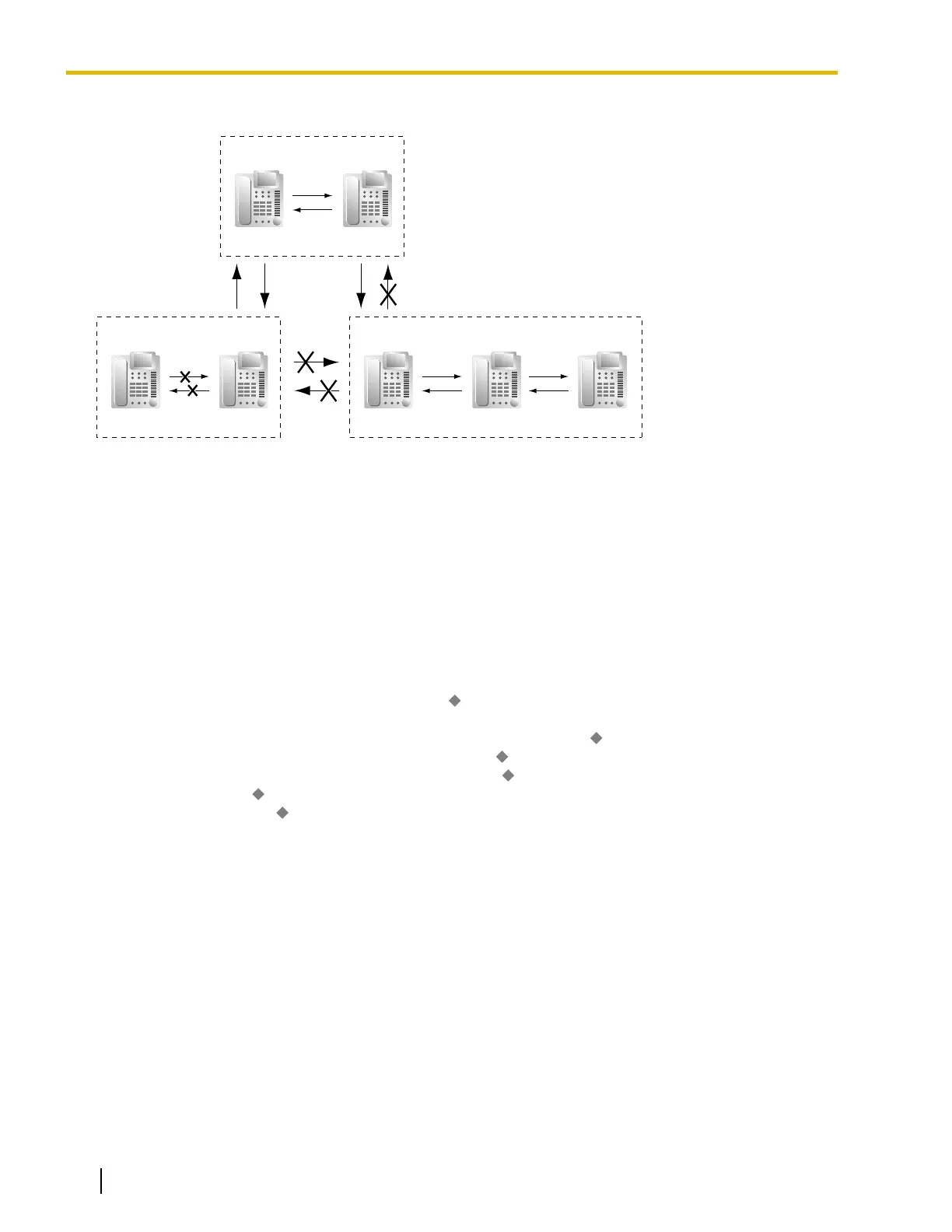